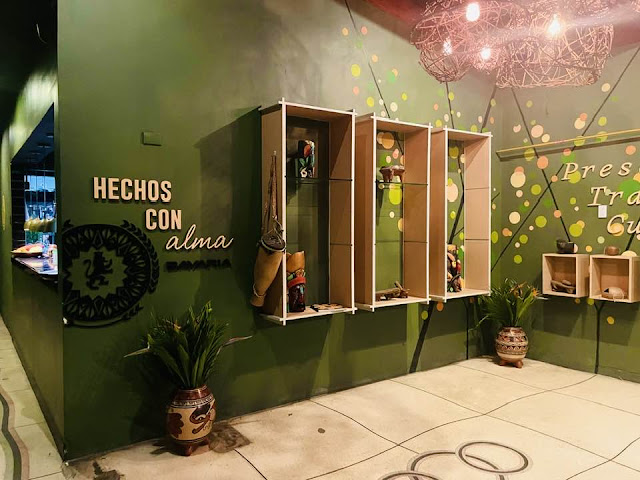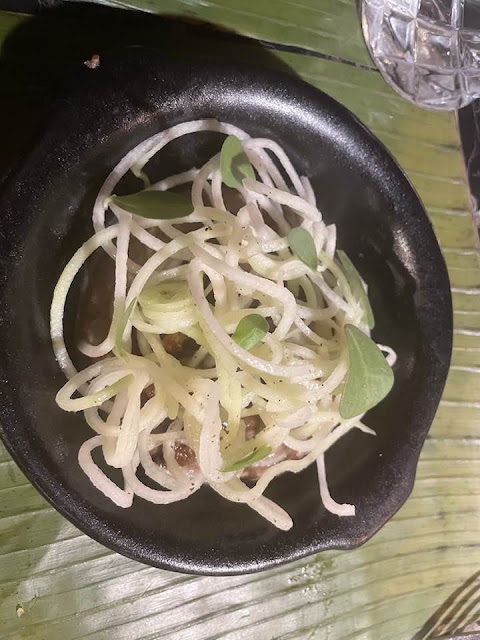Restaurants are a site of cuisine shaping and an economic niche catering to people who travel away from home for work, for pleasure, or in search of a new life - ETHNOSITES
Eating Away From Home
- Meals eaten at home are relatively safe, familiar, and cooked by trusted people and the company is socially safe, with predictable gastro-politics.
- industrialization and urbanization have increased the numbers of people who must eat away from home
- There are health but also social risks to eating away.
- early coffee houses were places of public discourse which often fueled social dissent.
- different classes can co mingle in restaurants, possibly violating the social order
- imperial Russia- controlled the clientele to maintain social stratification
- gentrification can bring in elite restaurants to poor neighborhoods and upset the social and economic landscape
- Shared characteristics
- food for a price
- food for those who cant or don't want to cook
- acceptance of public eating culture in some form
Street Food: Eating Standing Up
- started to serve the needs of a diversified workforce who had moved into urban centers, lacked access to kitchens
- humble beginnings but can lead to a national cuisine
- led to more fixed locations for slower food and later fast food franchises
- Low cost food and low cost for business owner
- Plays out class relations
- many rely on the food while others, like the middle class, will choose to venture across class lines for a new foodie opportunity
- Mexican Street Food
- some of the earliest
- catered to new rural workers who migrated en masse to cities - 18th century
- based on Mestizo identity, mixing indigenous and European ingredients
- Has gone global
Restaurants: Eating Sitting Down
- Eating in public was not always an accepted social activity
- this is especially true for women, whose lives occur away from public view in many cultures
- India as an example, but Sicily is another if you are a widow
- Western style cities were constructed with plazas which made great sites for hotels and restaurants that served "continental cuisine"
- suit a variety of tastes
- conspicuously patronized by the wealthy
- normalized the culture of public eating
- origins in France
- Eating out is about making important social and cultural statement
- pursuit of status by dining in public- anyone could dine as long as they could pay regardless of social class or caste
- History
- earliest served light foods like restorative broths (restaurant) and later developed much more substantial fare
- by the 1820s, the restaurant was well established and catered to travelers and those who wanted to dine out
- became a space for urban sociability- but following a new model of service and choice
Characteristics of Restaurants
- Six characteristics
- Commercial Business Setting
- restaurants are market transactions but are "de-commodified" by attributing them social and cultural meaning
- decor is an important part of meaning making
- shaping the ambiance- sounds, images, colors, furniture, temperature
- everything is carefully managed to give you a home away from home experience or an exotic location
- ethnicity may be expressed -menu, decor, theatrical quality where culture is exaggerated
- there is a gastro-politics
- host/guest relationship
- internal- front/back of house
- waiters police social ettiquette
- Time
- May be open 24/7 (fast food) or during restricted hours
- manage when people eat certain meals and what they eat
- Tables
- sitting down to eat a meal is an important part of the restaurant experience
- public and at the same time private (you have your own table and you are not expected to interact with others
- Restaurants have become a third space-- not home, not work, but a space inhabited to do things in public
- Commercial Kitchen
- professional spaces where public cooking has become systematized for the commercial production of large quantities of food
- lead to new cooking styles and highly organized kitchens
- Kitchens used to be "obscure" now they may be visible to the public and part of the "show" especially if there is a celebrity chef
- precarious living for those who work in them
- fraught labor relations
- low pay
- unsafe working conditions
- little job security
- tip deductions for mistakes
- exploitation of minorities and sometimes family members
- Menu Selections
- fixed pricing- prevented haggling and encouraged patrons to eat within their means (early restaurants were very expensive)
- separate dishes- restaurant innovation
- choices- personal options puts pressure on home cooks to meet individual preferences
- Menus are about "choice" for diners abut also are the DEFINING DOCUMENT for the restaurant's identity as a purveyor of particular dishes and cuisines
- make the geography of a nation taste familiar-standardization of dishes
- Performance
- gastro-politics of meals assumed a new level of intensity in public
- eating out is special and requires more attention to norms of behavior appropriate to ones social identity
- social identity is negotiation in aprt in this public space through ones choices and behaviors
Gastronomy: Cultivating Culinary Taste
- the culture of gastronomy is crucial to the rise of restaurants as social spaces, rather than just providers of food
- Concepts in French gastronomy (Brillat-Savarin)
- Taste was something everyone had- not restricted to privilege and could be cultivated by experience
- taste could facilitate social mobility
- gastronomy is the pleasure and art of good eating
- restaurants were temples to the culture
- "taste" becomes an expression of social distinction even beyond food
- Gastronomy is about shaping local, regional and national cuisines and about sampling and becoming familiar with other people's cuisines.
- It has transformed eating beyond necessity and into a practice of pleasure and social differentiation, and a medium for negotiating identity politics
- it has enabled public eating to flourish and be a socially meaningful activity
- Urban Mass gastronomy-- adopted by many cultures
- example Japan
- yoshoku -- western style food
- washoku -- Japanese cuisine
- example Mexico
- focus of upper classes was eating french haute cuisine with mexican ingredients
Types of Restaurants
- Indigenous Restaurants
- In many places, like the US and Canada, indigenous people have little access to the restaurant business or consideration for the national cuisine
- generally they are absent from the restaurant culture- economically marginalized and so untenable
- In places like Mexico and Guatemala, local restaurants will serve indigenous cuisine of a region
- Is as contemporary as any cuisine
- becoming more popular but generally cater to a non-indigenous clientele
- The access to the traditional ingredients and flavors are important, part of food sovereignty issues, and it is the home of community cooking, not commercial ventures, that are for eating their own cuisine
- Mainstream Restaurants
- Nations that were founded by the greatest influxes of immigrants have grappled with the challenge of creating culinary unity from culinary diversity.
- from the point of view of the state, associated with citizenship needs to be constructed in order for people to have a sense of belonging.
- The national identity is usually constructed using the culture of the dominant ethnic group(s) and they will be the societal image-makers and constitute the "mainstream".
- "Ethnic" is contrasted with "mainstream"
- the cuisines of plural societies will reflect the power of the social order; the dominant ethnic group will form the culinary vocabulary, and the accent will include references to all other contextual influences-
- history
- place
- ethnic groups
- availability of foods (ingredients)
- Ethnic cuisines can be mainstreamed - adopted into the national cuisine so that their ethnic origin, though known, is disregarded
- pizza and pasta in the USA (almost everywhere)
- made with creative adaptations
- Examples of mainstreaming
- Japanese kaiseki -highly refined Japanese cuisine restaurants
- Japanese Kaitenzhushi - conveyor belt sushi restaurants
- Immigrants and Ethnic Restaurants
- The nostalgic desires for foods from home has created an economic niche for many immigrants:
- opening shops that import specialty foods
- opening restaurants that can equally serve their own community and interested others
- Starting point for the study of mainstream attitudes toward ethnic minorities
- acceptance of an ethnic group by mainstream society, often AFTER immigration of that ethnic group has lessened
- the willingness to eat their cuisine
- there may be an inverse relationship between immigration intensity and the status of a group's cuisine
- Many marginalized immigrant groups will operate restaurants serving the prestige food of another ethnic group
- Chinese owned sushi restaurants
- Mexican owned pizza shops
- Bangladeshi owned Indian shops
- Italian owned French Restaurants
- Serve the needs of their own community first, and after adventurous mainstream diners popularize the cuisine, and provide a place for immigrants to find employment
- Needs:
- There must be a well-established culture of dining out
- also, the restaurant business needs to be attractive to the new immigrant
- Urban Mass Gastronomy
- the exercise of cultural omnivourousness by the wealthy have made ethnic restaurants an attractive option
- four factors for viable employment
- low capitol cost
- presumed cultural capitol of "authentic knowledge" of the immigrant
- social capital available- borrow money, draw upon workers willing to work long hours for little pay
- loyal kin
- friends
- the ethnic community
- the serial pattern of migrants moving into this employment niche
Ethnic Cuisine: Diaspora Dining
- Indian Cuisine in Britain
- created an anglo-Indian cuisine through cookbooks
- appropriated Indian spices and dishes during colonial rule
- Hindustanee Coffee House
- 1811 opened in London as the first Indian ethnic restaurant by Bangladeshis for the Sylhet region.
- Sylhet began buying bombed out fish and chips shops - opening them and selling pies, peas, fish and chips, curry and rice, curry and chips
- moved Indian food into the heart of working class life and established its place in the minds of the British population as "British cuisine"
- Two types of Indian restaurants
- small family run- standardized Indian cuisine
- Newer restaurants serving regional cuisines of India
- Gujarati
- Goan
- Kashmiri
- Diversification allows foodies to claim their preference for one local tradition over another and increase their status as foodies
- The popularity of Indian cuisine has led to increased immigration as second generation wants to be in white collar professions rather than work at resturaunts
- Also need chefs from India to refine cuisine
- Chinese Cuisine in North America
- Chinese restaurants first opened in many ghettoized Chinatowns to serve the needs of kitchen-less men, and slowly adventurous non-Chinese cultural omnivores
- Chop Suey, Chow Mein and lemon chicken are all derivatives of Chinese cuisine shaped to new circumstances
- Change in meal format
- traditional: tea, appetizer, main course, soup, tea (again)
- modern adaptation: soup, meal, dessert
- Fortune cookie: derived from lucky dumplings (New Years tradition)
- only one dumpling traditionally had money in it but Because Americans believe everyone should have an equal chance at good fortune, there is a fortune in every cookie.
- Ethnocites
- places where mainstream sociaty can eat the food of other ethnic groups
- places where immigrants can eat their own food and reaffirm their identity
- Authenticity
- in these spaces, the complex gastro-politics of identity work , at the level of the individual and ethnic groups in plural states are performed through "authentic food" served as a commercial transaction.
- It is about the power to claim and reclaim authenticity and to constantly rework identity through the public consumption of food.
- How is it determined?
- depend upon a contrast between our food and other peoples food (both constructed- staged authenticity)
- Creolization; adapt to changes in the tastes of their new environment (creolization adaptation)
- There is a dialectical relationship between authenticity, rooted in tradtion, and in creolization, rooted in in the new context.
- can be projected by:
- assumptions about the owners ancestry and ethnicity
- the exotic -sounding name of the restaurant
- decor depicting cultural artifacts
- evocative music
- ultimately judged by the EXPERIENCE of the diner- it is relational
- Role of ethnic restaurants
- conserver of tradition
- innovator for forging new identities
- vehicle for diners to maintain a connection to their homeland
- offers diners a strategy to undermine the dominant stereotypes
- archive of culinary memories
- living rooms for the homesick
- Eating in ethnic restaurants correlates with higher income levels, class, education and value for money
- positive way to bridge cultural barriers while appearing cosmopolitan for non-ethnics sampling other's cuisines
- places where one can experience the other safely
- where the foreign is made familiar
- where the global is miniaturized
- Restaurants foster cross cultural encounters
- Ethnic Restaurants Become Tourist Sites
- staged, exaggerated and essentialized reduction of culture
- diners become culinary tourists, willing to experience the cuisine, and sometimes taking postcard-like photographs to document their visit
- Culinary Colonialism?
- The eating of ethnic food by individuals of the mainstream dominant culture can be seen as a kind of culinary colonialism or imperialism.
- reinforces inequality in society
- dishes are a resource that can be appropriated without any regard for the people whose cuisine it is, or the social, economic, and political circumstances in which they find themselves, as immigrants or members of distant states
- commercial food commodifies culturethrough ethnically marked ingredients, flavor, and dishes that hide the reality of the lives of the people who produce the restaurant meal , and those who produce the ingredients and flavors along the food chain.
- the "cheapnes" of ethnic food is exploited-demanding low wages, cheapens the originating people, their lives, and their culture
- provide culturally branded food through which dominant ethnic group defines itself
- BUT supports the local economy and provides livelihoods
- "Anti-Colonial Eating Manifesto"
- Ethnic groups have the right to define their own authentic culinary traditions, which have been creatively adapted to a new locality
- Diners should respectful, gain knowledge of the cuisine, reflect on the complexities of race, gender, class, privilege, and power
- there should be empathy between the consumer and the producer

























































No comments:
Post a Comment